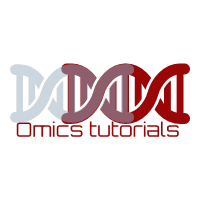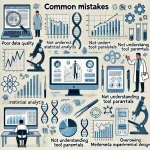
Bioinformatics glossary – O
November 9, 2018A | B | C | D | E | F | G | H | I | J | K | L | M | N | O | P | Q | R | S | T | U | V | W | X | Y | Z
Bioinformatics glossary – O

Object-Relational Database
Object databases combine the elements of object orientation and object-oriented programming languages with database capabilities. They provide more than persistent storage of programming language objects. Object databases extend the functionality of object programming languages (e.g., C++, Smalltalk, or Java) to provide full-featured database programming capability. The result is a high level of congruence between the data model for the application and the data model of the database. Object-relational databases are used in Bioinformatics to map molecular biological objects (such as sequences, structures, maps and pathways) to their underlying representations (typically within the rows and columns of relational database tables.) This enables the user to deal with the biological objects in a more intuitive manner, as they would in the laboratory, without having to worry about the underlying data model of their representation.
Oligonucleotide
A short molecule consisting of several linked nucleotides (typically between 10 and 60) covalently attached by phosphodiester bonds.
Open reading frame (ORF)
Any stretch of DNA that potentially encodes a protein. Open reading frames start with a start codon, and end with a termination codon. No termination codons may be present internally. The identification of an ORF is the first indication that a segment of DNA may be part of a functional gene.
Operator
A segment of DNA that interacts with the products of regulatory genes and facilitates the transcription of one or more structural genes.
Operon
A unit of transcription consisting of one or more structural genes, an operator, and a promoter.
Ortholog
Orthologs are genes in different species that evolved from a common ancestral gene by speciation. Normally, orthologs retain the same function in the course of evolution. Identification of orthologs is critical for reliable prediction of gene function in newly sequenced genomes. (See also Paralogs.)
Overlapping clones
Collection of cloned sequences made by generating randomly overlapping DNA fragments with infrequently cutting restriction enzymes.
OMIM
Online Mendelian Inheritance in Man; this database is a catalogue of human genes and genetic disorders (http://www.ncbi.nlm.nih.gov/sites/entrez?db=omim).
Ontology
Ontologies are formal representations of knowledge that provide definitions of entities, their attributes and relationships to other objects.
Optimal alignment
The highest scoring alignment given a defined set of rules and parameter values for comparing different alignments. There is no such thing as the single best alignment, because the score will vary according to the values you have set for mismatches and gaps.















